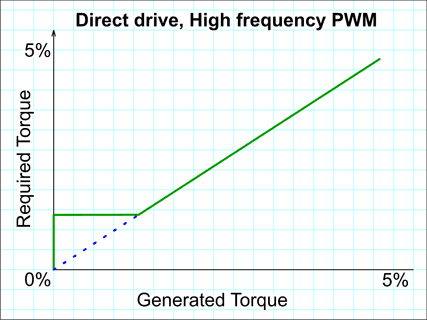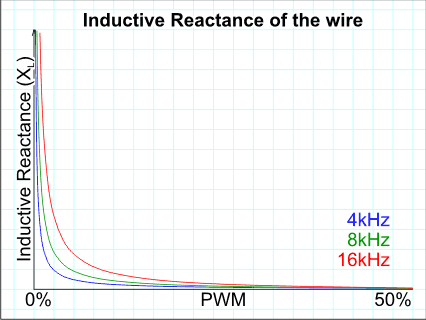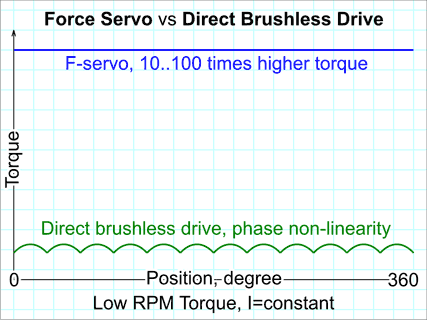|
Force In Force Servo, there is a reduction gear between the motor and the force sensor that increases the torque. The reduction gear helps establish a balance between force and speed across a broad range of values. Speed Force Servo is designed to work with a reduction gear that ensures the optimal balance of speed and power reserves. The reduction rate can be between 1 (fast rotation) to 1000 (high torque). As a rule, the optimal reduction rate for a small platform with a camera is around 100. Accuracy Force Servo features a force sensor, and the force it creates is always accurate, regardless of the position of the rocker. Mechanical noise in Force Servo is absorbed by an elastic element in the coupling. Control In order to control a brushless direct drive, you have to consider the position of the rotor in relation to the stator. In other words, additional position-based feedback is a must. Force Servo is easier to control: direct and differential feedback is used to send motion commands for reducing the error margin relative to the set value. The set value can be defined by various sensors and their combinations: operator, gyroscope, accelerometer, optical marker, object shift in the footage. Result If we are talking about a stabilized platform for a video camera, it is correct to use measurable characteristics. Let's installe a laser pointer on the stabilized platform and measure the fluctuations from 10 meters. A laser beam helps distinguish the difference between the platform stabilization effect and that of optical or digital stabilization. Comparison of well known samples 
Limits of short PWM pulse

The inductive reactance of the wires (a direct drive with a long wiring)

Comparison of torque
 Aleksey Zaitsevsky, 2014, F-servo.com |
